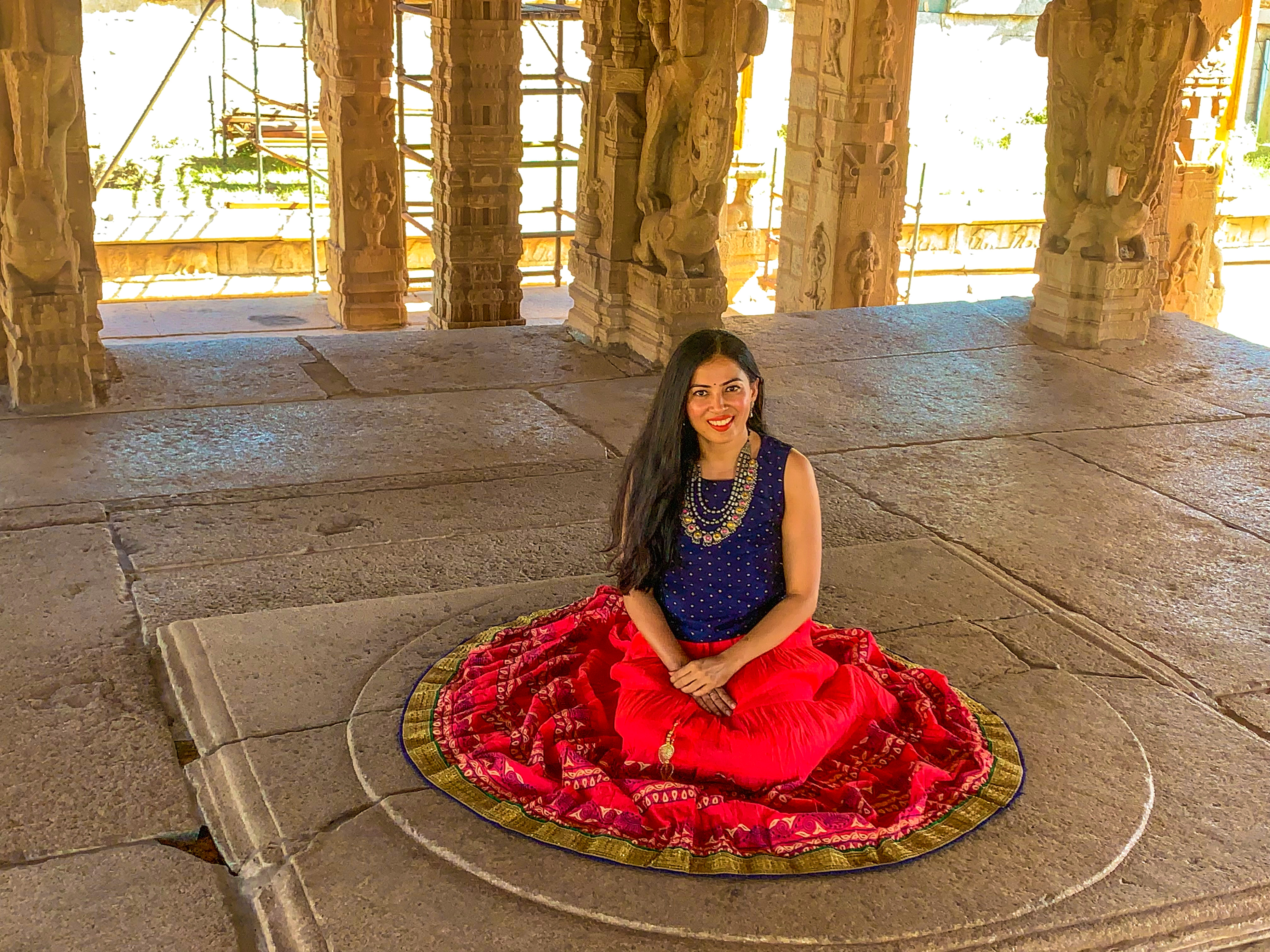
A journey of a thousand miles begins with a single step and Archana Chaitanya took that step last year! After two mundane lockdowns, she broke free from the shackles of the pandemic and set out on an adventure. A journey to the mystical and ethereal land of Hampi. Archana’s trip to Hampi has been eventful and enlightening. Moreover, it was a nostalgic revival of her childhood memories of visiting this beautiful city. In conversation with her, India Chalk has had the wonderful opportunity to see Hampi through Archana’s eyes. Let’s walk you through this amazing journey.
For almost five years Archana’s eagerness to visit Hampi has just been building up. Finally, in June 2021 she decided to act upon it and took off on a 4 day trip with her husband. Their drive down from Bangalore to Hampi was fairly long but absolutely worth it. Faint memories of her last visit to Hampi from her childhood came rushing back during her trip. Owing to these unprecedented times, not many people were traveling to this otherwise populated tourist destination. It was a sigh of relief for Archana and her husband as they enjoyed their time there peacefully. Archana has been keen delving into the roots of the ‘Vijayanagar empire’. She says “ I always wanted to know the history of Vijayanagar because I’ve read a lot about it and I wanted to go there and experience it.”
A hike up the Hemakuta Hill
An excellent guide assisted Archana and her husband. He inaugurated their journey in front of the ‘Virupaksha Temple’ with a brief history on the ‘Vijayanagar Empire’. They then proceeded to the ‘Hemakuta hill’. As Archana says “ The Hemakatu hill is so beautiful, I cannot express it in words!”. The hike isn’t difficult at all and the panoramic view of Hampi from top is mesmerizing. The hill is a collective region of over 50 temples. The ‘Sasivekalu’ &’Kadalekalu’ Ganesh temples are particularly impressive. Back in the 14th Century, market vendors, namely the mustard seed (Sasivekalu) vendor and the peanut (Kadalekalu) vendor sponsored the construction of the temples. However, invasions and war resulted in their destruction. On the second day of their trip, they revisited the hill to watch the enthralling sunset from the ‘Hemakuta hill’. Unfortunately, grey clouds swiftly overtook the sunset. Nonetheless, they had a splendid evening atop the hill.
Experiencing the Royal Enclosure
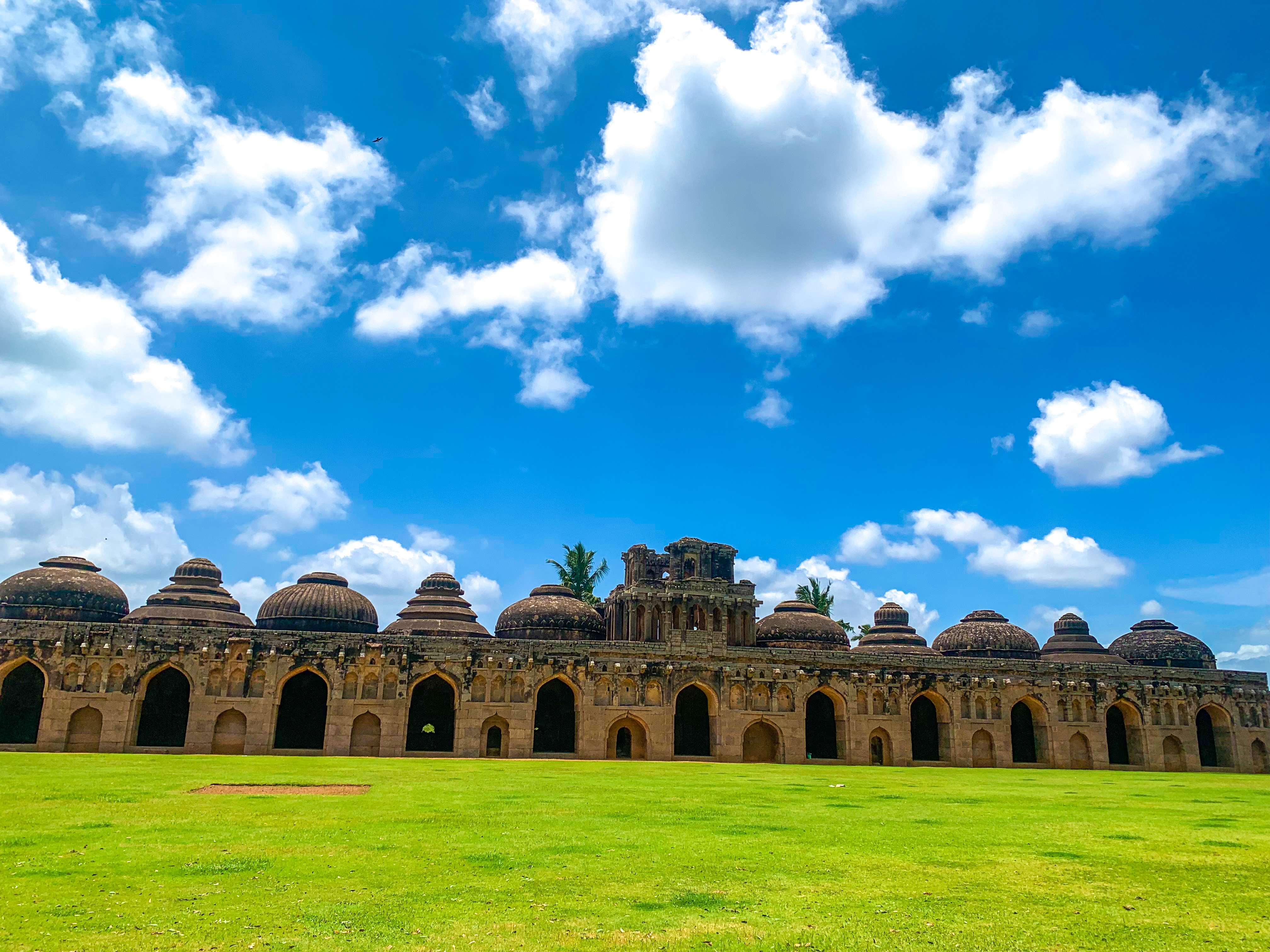
What once used to be the grand abode of the royal family in the ‘Vijayanagar Empire’, is now but mere ruins. The only monument left standing in the ‘Royal Enclosure’ is the ‘Hazara Rama Temple’. However, the idol inside the temple is completely destroyed. The beauty of the Hazara Rama Temple lies in its three layered carvings of the epic Ramayana. As history suggests, the temple was exclusive only to the royal family. When they visited the temple, they used the carvings to narrate the Ramayana to their children during the ‘pradakshina’. Archana made sure to capture these beautiful carvings in a reel. The people of ‘Vijayanagar’ also used to fondly celebrate Dussehra. Consequently, a stone structure called the ‘Mahanavami Dibba’ outside the temple has carvings of these grand festivities. The King of the ‘Vijayanagar Empire’ would sit at the ‘Mahanavami Dibba’ and enjoy the celebrations.
Owing to Hampi’s warm climate, the ‘Royal Enclosure’ mostly had wooden structures. Unfortunately, the battle of ‘Talikota’ caused massive destruction to the empire. The invaders from the Deccan Sultanate had won the war but took a while to relocate to Hampi. In this stint, the ‘Vijayanagar Empire’ along with its treasures and 500 Elephants moved to Andhra Pradesh. When the invaders arrived the sight of an abandoned land infuriated them. In their rage they burnt down the wooden structures and destroyed the temples. However, the ‘Hazara Rama Temple’, ‘Mahanvami Dibba’ and a secret chamber built in the enclosure saw less destruction due to their stone structures.
On the steps of Pushkarini

In the ‘Royal Enclosure’ Archana and her husband also visited ‘Pushkarini’. “It is very beautifully made!” she says with glee, as she talks about this intriguing step-well structure. Archana carefully explained the fabulous automated drainage system built centuries ago. Remarkably, in an age when there was no machinery, the people of the ‘Vijayanagar Empire’ built an impressive drainage system. Water was brought to the empire from a waterbody 3 km away through canals. This waterbody is known as the ‘Kempapura Lake’. The lake was artificially made at an elevation to make the drainage system easy. Furthermore, multiple ‘Pushkarinis’ were created to celebrate festivals like Holi.
Under the roof of the Lotus Mahal

‘Krishnadeva Raya’s’ Son-in-Law created the ‘Lotus Mahal’ as a recreational spot for the royal family. Archana agrees that the ‘Lotus Mahal’ is like a “14th Century Farmhouse!” The ‘Lotus Mahal’ is another architectural masterpiece in the ‘Vijayanagar Empire’. A spectacular irrigation system was built into the walls of the ‘Mahal’. The water would circulate around the structure through the walls and create an internal cooling effect. This irrigation system is active even today but remains dysfunctional. Ahead of the ‘Mahal’ were the Elephant Stables. They had an Indo-Muslim style of design. These stables were shelters for the Elephants that took part in the Dussehra festivities. Caretakers of the Elephants also had quarters alongside. “These are the least destroyed structures”, says Archana, fondly remembering the exquisite architecture of the ‘Lotus Mahal’ and the Elephant stables.
The Temples & Their Markets
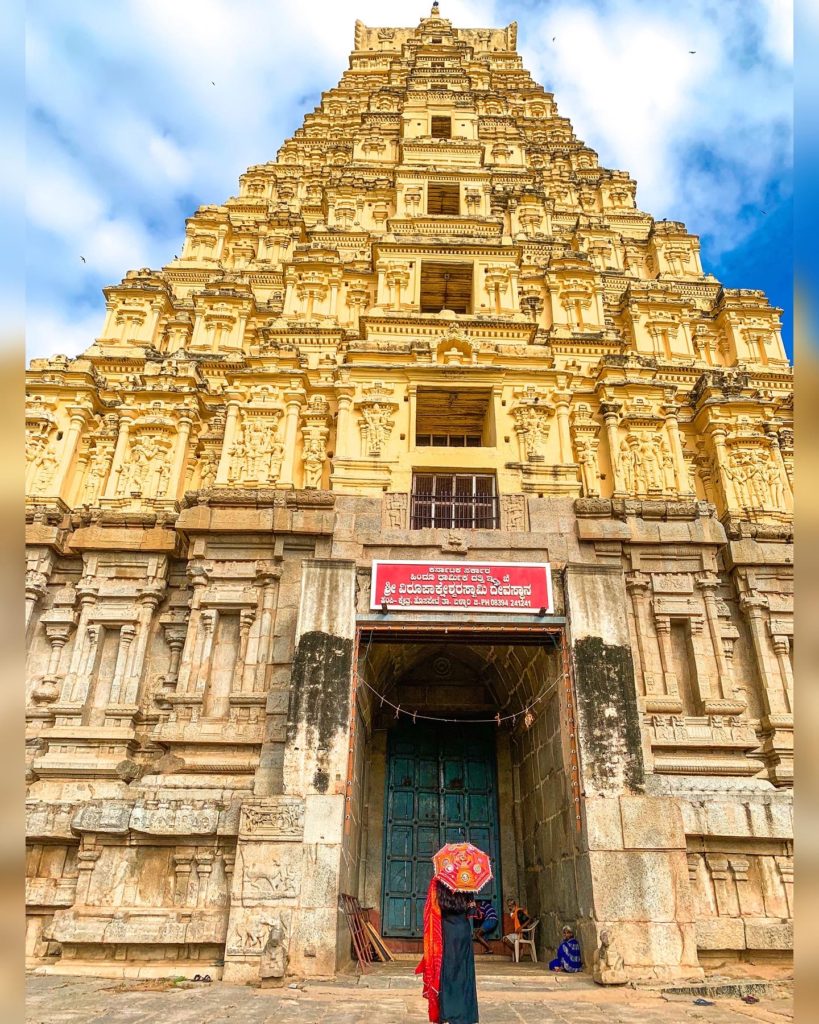
With utmost enthusiasm, Archana tells us about the big markets that used to flourish in the ‘Vijayanagar Empire’.The first was a two storied building setup in front of the ‘Virupaksha Temple’. This market exclusively sold gold, diamonds and precious stones. The second was in front of the ‘Achyutaraya Temple’. A market that only sold a variety of spices. The third market was built over a 1.5 km radius. It was located opposite the ‘Vijaya Vittala Temple’. This huge market solely sold luxury items and garments. The ‘Vijaya Vittala Temple’ also consisted of other buildings made for specific purposes. One was a marriage hall and the other was a place of rest. There was also an underground place of worship in the temple.
In front of the ‘Krishna Temple’ was a market for fruits and vegetables. Finally, across the ‘Royal Enclosure’ was a market selling all the items necessary for religious purposes and practices. Traders from neighboring countries often visited these marketplaces. Glimpses of the markets are still visible but mostly dilapidated. A complete trip around these temples and markets would take a total of three days. With great pride Archana says “When you see these markets you can tell that India was never poor!”.
How Vijayanagar came to be!
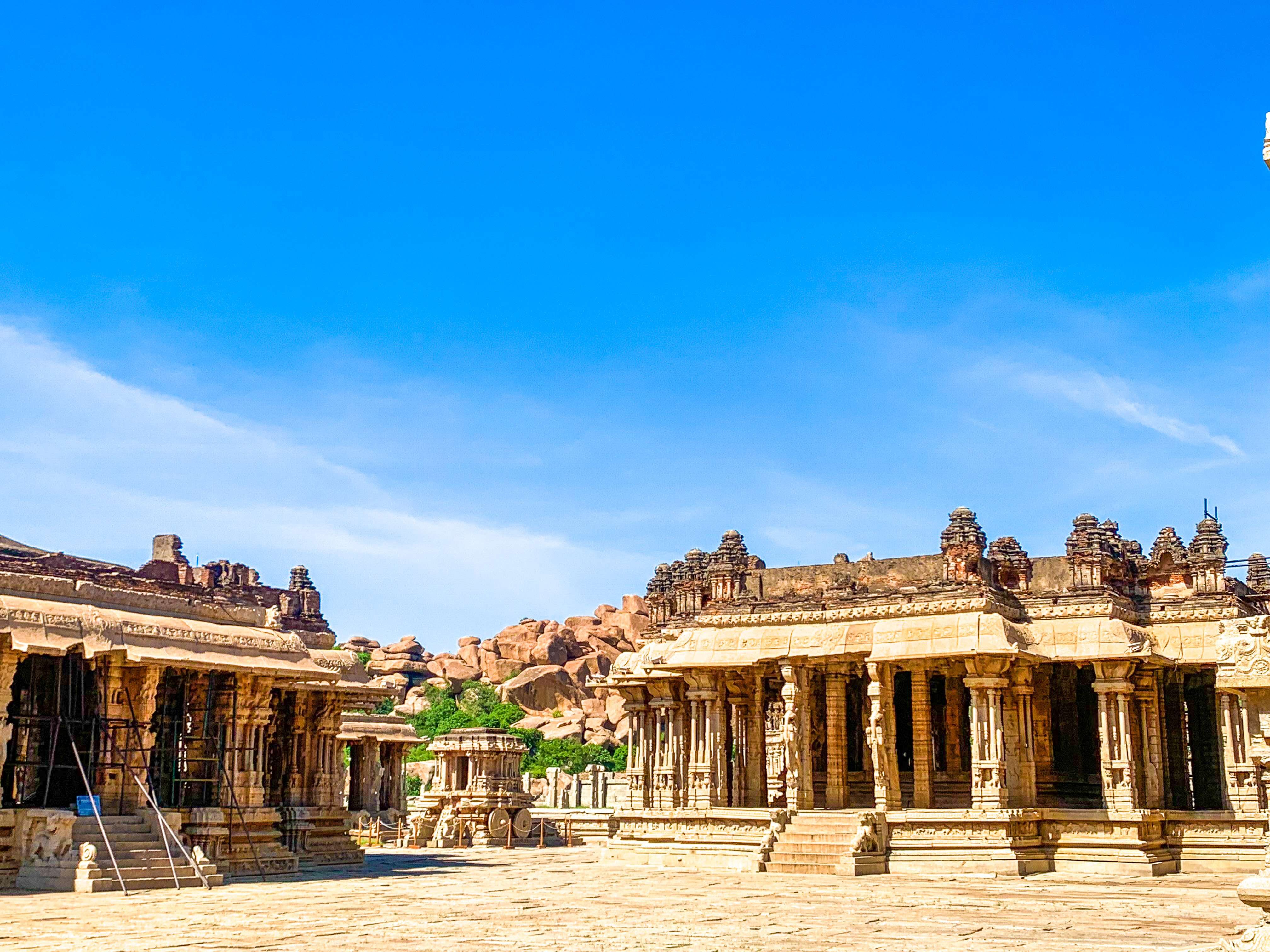
Legend has it, a ‘Palegar’ called ‘Kampila Raya’ had his court there before the ‘Vijayanagar Empire’. He lost his court and life in a battle with ‘Allaudin Khilji’. Consequently, ‘Khilji’ took over the court but was unable to take care of the region. He then converted ‘Harihara and Bukka’ – two ‘mantris’ – from ‘Kampila Raya’s’ court to muslims and tasked them with the caretaking of the region. Furthermore, the ‘Virupaksha Temple’ had existed there since the Ramayana. On one of his visits to the temple, ‘Vidyaranya’ found out about ‘Harihara’ and ‘Bukka’ and inspired them to convert back to hindus and protect their heritage. Ultimately, they laid the foundation of the ‘Vijayanagar Empire’. However, the empire saw its peak in the reign of ‘Krishnadeva Raya’.
An insight to the establishment of the Vijayanagar Empire
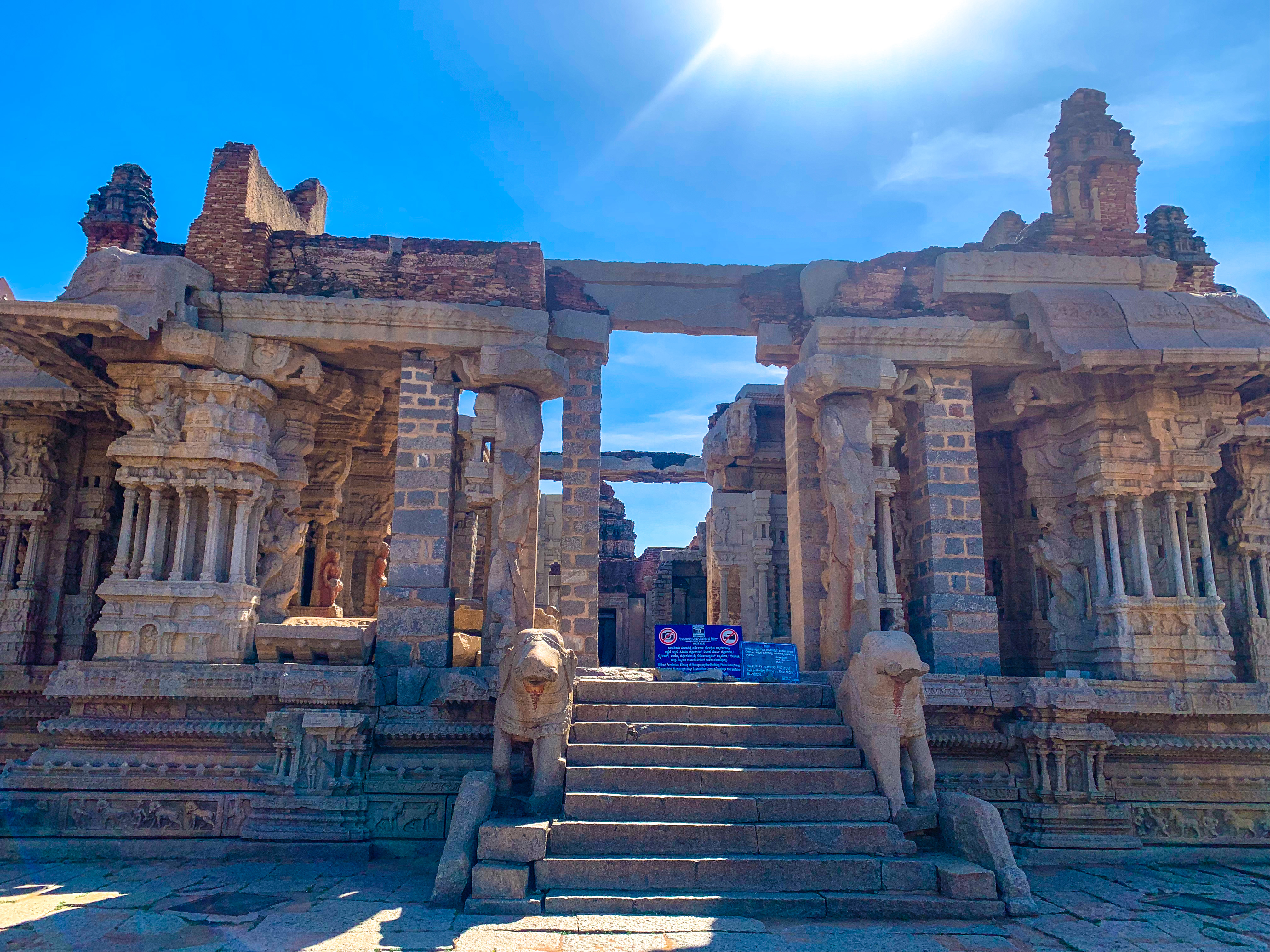
Archana exclaims “How they cut the stones in the Vijayanagar Empire is very interesting!”. The stones were first penetrated with wooden sticks. Then a specific kind of oil was applied on the sticks. The heat would cause the oil soaked stick to expand, resulting in a crack in the stone. The people of ‘Chitradurga’ also used this technique. “ They’re cut just like a slice of cake! ” says Archana thrilled by such perfection. She explains that the empire was strategically established close to the Tungabhadra river on one side. The invaders would face hinderances due to t6he river and stone borders. This was their way of creating a natural two tier security system.
One of her favourite memories from her earlier trip to Hampi is from visiting the ‘Sangeet Mandapa’ of the ‘Vijaya Vittala Temple’. However, this time around they were prohibited from entering. She hopes that the Government takes an effort to restore the monument and promote it culturally. Archana is an avid lover of history. This trip to Hampi was no less than a dream fulfilled. She wants to grab every opportunity she can to dive deep into India’s history and cultural heritage. Next on her list are Rajasthan’s royal palaces and the holy temples of Madhya Pradesh and Odisha. In traveling and exploring the history of India, Archana finds her true essence. To conclude , we hope her journey to Hampi inspires you to set out and explore the magnanimity of India!

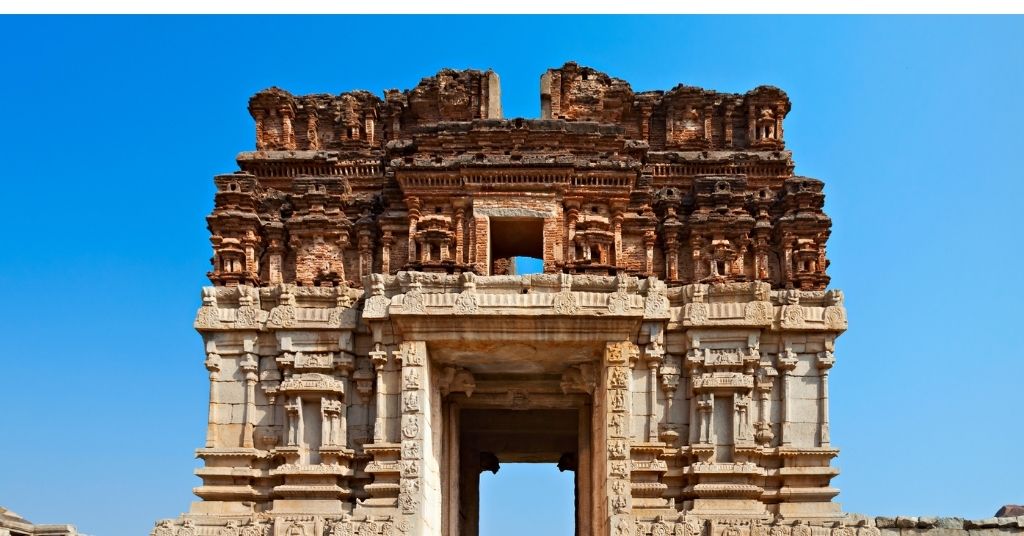
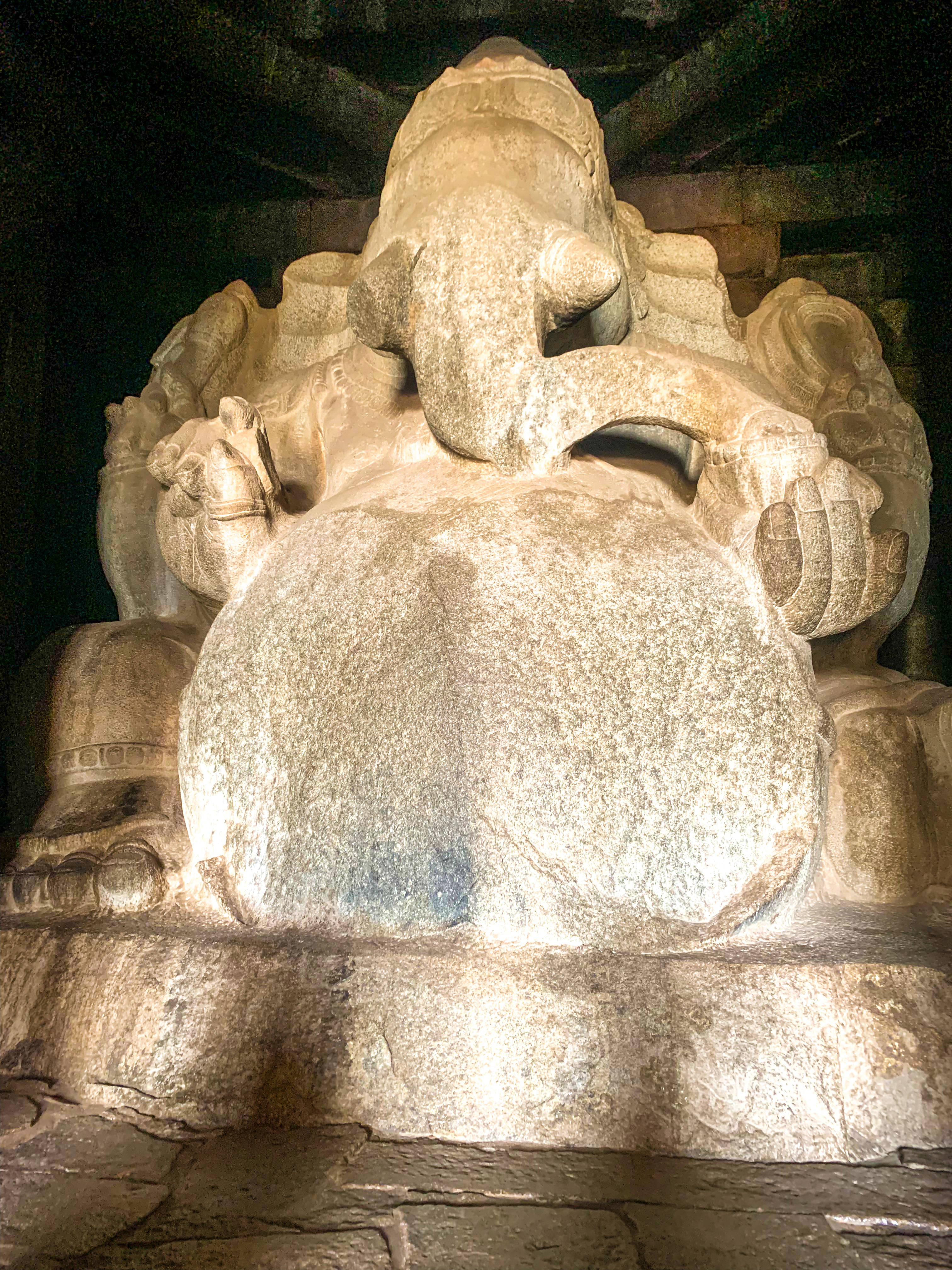


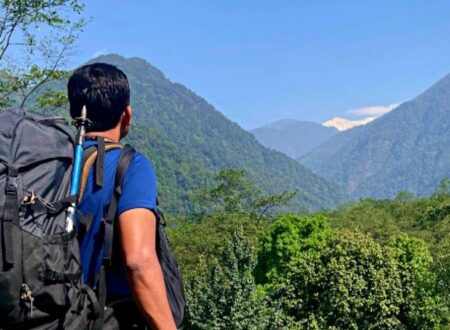
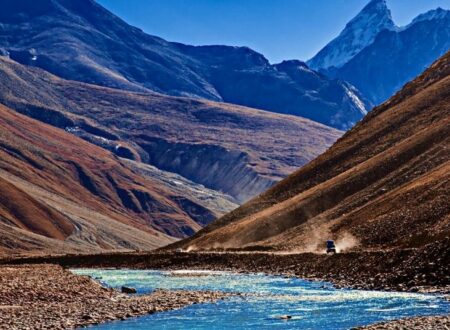


6 Comments